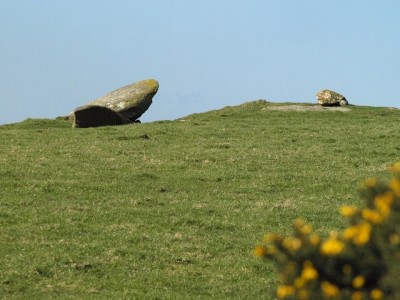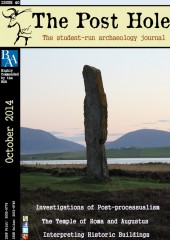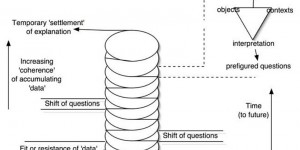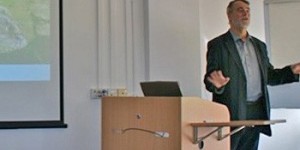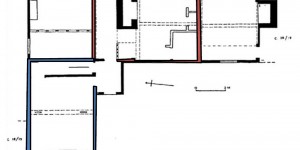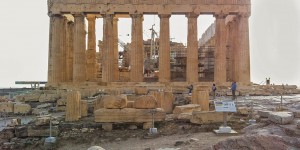Disclaimer: As the author of this article, I would like to make it known to readers that although much of the material in this piece is a product of my own thoughts, several conceptions are the result of sharing thoughts and ideas with people working and directing the site excavation at Hendraburnick ‘quoit’, all my knowledge of the site has been gained through participating in excavation of this site.
Hendraburnick ‘quoit’ is a misnomer. It is in fact not a quoit at all, but a particularly striking and scenic propped stone, lying upon a gently rolling valley-side in Cornwall. It is a fascinating site, and aside from being a testament to the power of prehistoric people to shift these enormous stones, it also exhibits several ancient engravings known as cup-marks, which involve the hollowing out of rounded dimples in the rock.
It was these cup-marks which had sparked an initial interest in the site, as unlike other rock art sites of this type in the south, there was reason to believe that it could provide the first tangible dating for them. This was because it was in situ and had the potential for datable material to be recovered. Thus, it perfectly fitted the agenda of an ongoing project into rock art in the south west of England, to form a corpus (Andy M. Jones pers comm) of information about these little known sites. This is why Hendraburnick was the focus of much excitement in the summer of 2013, during some small-scale excavations run by the Cornwall Archaeological Society. It was only after a week of digging and investigations that the more prolific nature of Hendraburnick was fully appreciated.
However, I should begin by describing its momentous form and placement in the landscape. Hendraburnick (which is actually the local name for the surrounding down land) is a long, rounded and flattened epidiorite stone, propped up and laid to rest upon a platform of smaller slate stones at one end, and naturally occurring slate bedrock on the other. This bedrock also showed a few cup-marks. It is thought that the source of the epidiorite came from the river valley below, before it had been lugged up the hill. It was perhaps selected for use in the site because of its aesthetically pleasing natural shape like a stone axe. Next to it was a smaller stone, which is thought likely to have originally been a fallen standing stone of a later date, which also had a few cup-marks. This later instalment of a standing stone may have been a way to mark the older site as a place of religious significance.
Once excavation was underway, artefacts very quickly began to spring up around the stones. These included a small segmented faience bead, arrowheads and other flint implements, a large amount of smashed quartz and a broken greenstone mace-head. My own test pit had been in a fortunate place, as it was not long before a small but perfectly formed barbed and tanged arrowhead emerged, relatively dated to be within the Early Bronze Age and appearing as though it could have been made yesterday. Was this unused, pristine condition arrowhead dropped by a hunter as he roamed the river valley sides in search of deer? Or was it carefully made and deliberately placed by the propped stone to pay respect? If so, then this could be a sign of longevity of belief, or at least recognition of a special place, lingering from centuries earlier in the Neolithic.
When we started work on the site, we had few significant dates for the stones except for relative dating based on the nature of the artefacts and the form of the site. However, subsequent radiocarbon dating of charcoal remains found at the site around the larger stone and the base of the smaller one have provided several interesting dates. The smaller of the two stones has given an Early Bronze Age date, while the larger cup-marked stone gives an earlier date from the Late Neolithic, serving to illustrate the longevity of ideology surrounding this impressive hillside monument.
Hendraburnick was placed on the side of the hill, rather than the top, to face out across the River Camel Valley. This special placement could be considered to relate to ideologies which perhaps involved worship or, reverence of a landscape from a certain view point. They may even have placed it there to deliberately avoid ‘dominating’ the valley through putting it on the hill’s summit. Or maybe the idea was for the monument to be in a secret or hidden location, where it could not be viewed by just anyone: perhaps the rock art was ‘special’ information for just a few special members of the community.
It was during the latter half of the days spent working at Hendraburnick though that the largest revelation was to occur. It was discovered that what had previously been thought to be only a few cup-marks, were actually just part of the whole design, and far more numerous. Once this had been noticed at ground level, a camera was elevated using a long pole to achieve an aerial shot of the rock art designs. After this had been highlighted, an afternoon sat atop the stone, meticulously peeling off lichen from the designs, revealed the extent of the art in subsequent photos. It was shown to cover most of the entire surface of the stone in long grooved lines radiating out and running down the stone from hollowed out cup-marks.
After this revelation, we could, and still can, only guess about the purpose and significance of the radial dots and lines. As you can imagine, there were many speculations on site about the purpose of the art, including the plotting of solar movements and shooting stars, symbolic maps, representation of sun rays and other abstract ideas, or even conveying narratives. It was also suggested in conversation that it could have been a sloped platform upon which liquids were pooled into the dots and allowed to run down the face of the stone via the grooves: a 4000 year old altar, if you will.
To me, this begs the question of whether other propped stones of its kind in Cornwall also exhibit ancient artwork. This example of such artwork has only recently been discovered. The uncertainty concerning ancient artistic expression may be due to the erosion of stones or negligence because it was erroneously assumed to be non-existent in this part of the country. Whatever the purpose of the symbolism on the stone, it cannot be doubted that this proud and scenic monolith, overlooking the valley of the River Camel, complete with an array of fascinating artefacts, is anything but extraordinary.


